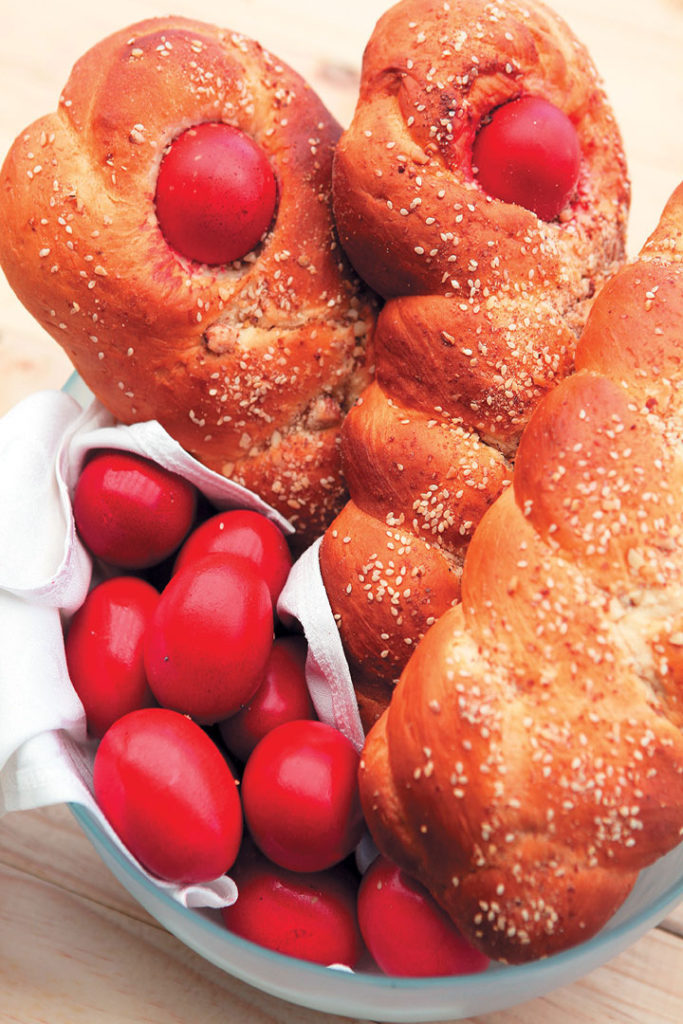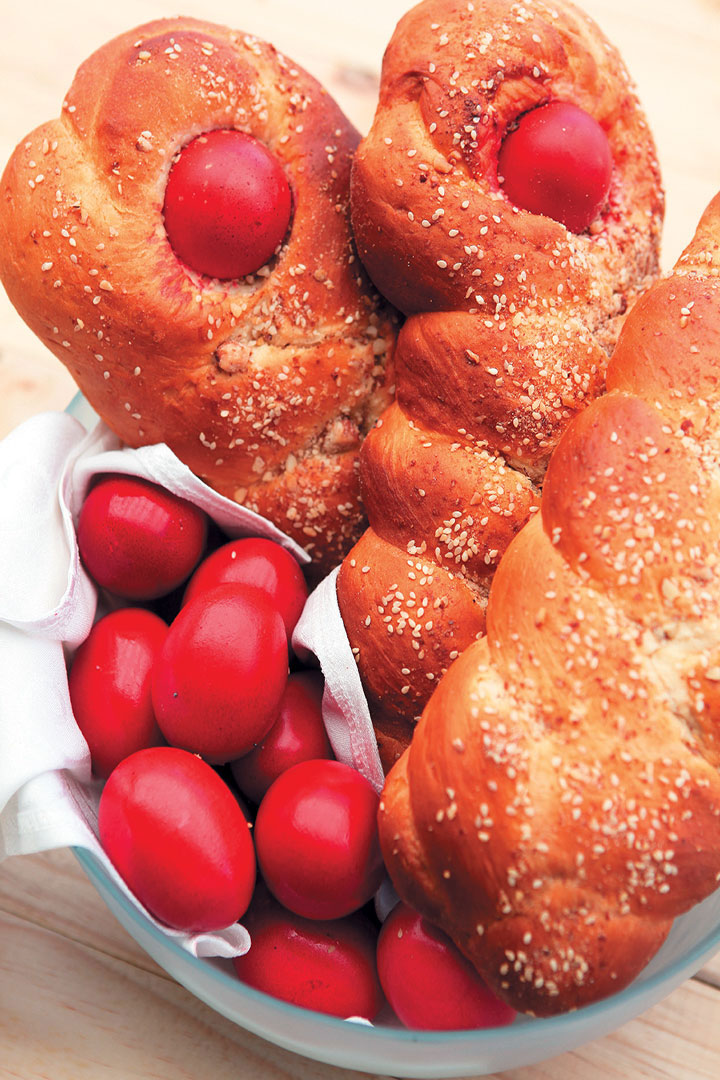Tsoureki (Greek Easter bread)
Ingredients
- 3 packets Anchor Instant Yeast
- 400g (2 cups) sugar
- 375ml (1½ cups) lukewarm milk
- 125ml (½ cup) lukewarm water
- 1,1kg (9 cups) flour
- 100 – 120g butter, grated
- 6 eggs + 1 extra, beaten, for egg wash
- 10ml (2 tsp) vanilla extract
- 15ml (1 tbsp) mastic powder
- 60ml (¼ cup) brandy
- 3 red eggs (boiled in red food colouring)
- toasted almonds, roughly chopped
Instructions
Preheat the oven to 180°C.
Pour the yeast into a bowl, add 5ml (1 tsp) of sugar and the milk and water. Whisk in 2 cups of flour until smooth and cover with a clean tea towel. Set aside in a warm area of the kitchen for about 30 minutes.
Sift the rest of the flour into the butter and mix with a dough hook. While the butter and flour are blending, use a separate mixer to beat the eggs with the sugar, vanilla, mastic powder and brandy until it reaches a light creamy consistency. Add this mixture to the flour and butter and continue to mix with the dough hook attachment.
Add the yeast mixture slowly and beat with the dough hook until smooth and bubbly. Cover the mixture and set it aside to rise in a warm spot until it has doubled in size, about 2 hours. Punch the dough down and knead a few times then divide into 3 equal portions.
Divide each of the thirds into 3 again and roll the smaller 3 into long ropes. Once rolled out, make a plait with the 3 ropes, pinching them together at each end, and place in a baking pan lined with greaseproof paper. Place a red egg into the bread at one end. Do the same to form another 2 plaits.
Cover the 3 loaves with a tea towel and allow to rise for another hour. Brush the tops of the tsoureki with egg wash and bake for about 20 minutes; they should sound hollow when tapped. Cool on a wire rack.
Notes
Mastic is a resin obtained from the mastic tree. In pharmacies and health shops it is called arabic gum (not to be confused with gum arabic). To use for tsoureki, grind in a pestle and mortar.



